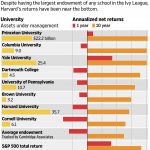A Classical Rebound from Oversold Extremes
Beginning on Wednesday last week, the stock market started a rebound from extreme oversold conditions that was just as volatile as the sell-off that preceded it. Such a rebound was to be expected, but unfortunately it cannot really tell us what is likely to happen next. In the meantime, the S&P 500 Index has reached a first level of resistance, so we should soon know more.

A secondary lateral resistance level is a little further above, and is likely to be reached if the first one gives way:
Click on picture to enlarge

SPX daily, with two lateral resistance levels indicated
Sentiment and Positioning Data
All sorts of extreme short term readings were reached around the lows, and last week was inter alia marked by numerous “selling climaxes” (i.e., stocks reaching new lows for the move, and then ending the week above the levels they started it at). Nevertheless, several short term indicators eased off from their extremes and the short term optimism indicator briefly went all the way to its opposite boundary (“extreme optimism”), but then dipped back again on Friday:
Click on picture to enlarge

Short term Optix for stocks – bouncing around as wildly as the market itself
Many options-related indicators have basically ended the week in the middle of their recent ranges as well, but it is worth noting a few details in this context. For instance, Mish reports that put premiums in Shanghai have reached record highs against call premiums in recent days. He rightly points out that this is a contrary indicator,except if a crash wave is underway. The Shanghai Composite hasn’t made much progress yet from its lows:
Click on picture to enlarge

The Shanghai Composite has produced a small inside day on Monday – so far, its bounce remains comparatively small
If the “normal” interpretation of the options skew in Shanghai is applicable (which has to be accorded the higher probability), then Chinese stocks should soon begin to exhibit some strength in the short term.
In the US markets, we see options-related data at levels that are historically high, but only middling compared to recent extremes. To this we would add a personal observation: we are closely watching short term options on leveraged ETFs (we don’t recommend playing them – it is an activity on the gambling side of short term trading. Then again, we like to play poker too). A major factor in the decision-making processes involved in trading these options are both absolute and relative option prices. As of Thursday/Friday last week, short term option bets on a rising market (puts on inverse ETFs, resp. calls on bullish ETFs) were still much cheaper than equidistant (in terms of strikes) option bets on a falling market (i.e., calls on inverse ETFs/ puts on bullish ETFs). In other words, the cost of hedging and/or downside speculation remains high on a relative basis, even if it isn’t as extreme as in Shanghai. Again, this doesn’t matter if the market is about to crash (or if price-insensitive players are forced to sell based on mathematical models). Normally it would indicate though that a bounce has further to go in the short term. The large size of the spike in the VIX recorded last week was probably mainly due to the element of surprise and the speed of the decline, but the VIX definitely reached a historically high level that has only been materially exceeded in major crashes.












Leave A Comment